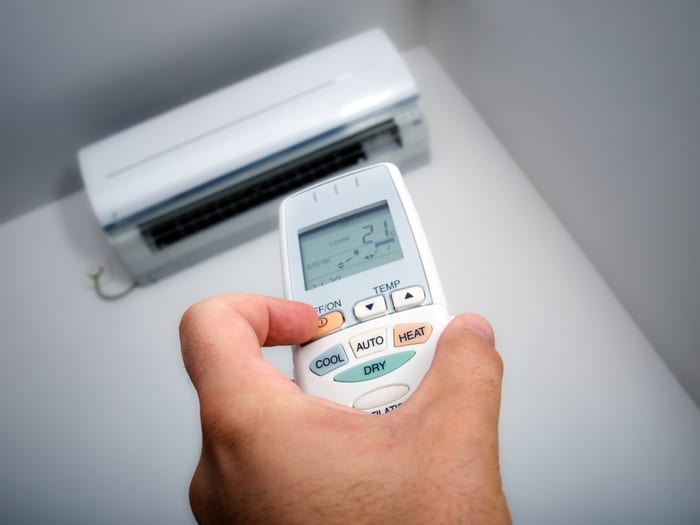Are you trying to figure out how to dehumidify your room?
You’re in luck! In this article, you’ll learn different ways to do it without a dehumidifier, so you can save money and forget all about the issue.
You can dehumidify a room without adehumidifier by opening the windows, turning on the air conditioner, or keeping your wet clothes and plants outside. You can also try repairing the walls and using fans to solve the issue.
Keep reading to learn more about these tips!
Why It’s Important to Remove Moisture from your Room
There are several reasons why you should dehumidify your room.
First and foremost, an environment with high moisture can cause mold growth. This can destroy the flooring, walls, furniture, and other things.
It also keeps your room from contracting a lot of mildew, dust mites, and other allergens. It removes all mold-related odors completely as well.
Humidity also brings along with it a lot of heat. This requires your air conditioner to run at full capacity, increasing energy costs.
Moisture can cause a lot of damage to your room’s belongings. For instance, it can cause the paint to peel off, and it can rot the wooden furniture as well.
If you’re suffering from allergies or asthma, too much moisture is not good for your health.
8 Methods to Dehumidify your Room without a Dehumidifier
There are different ways you get rid of excess moisture in your room. And the best part is that you don’t have to invest in a new dehumidifier to do this!
These methods are:
#1 Keep your Room Ventilated
The first and easiest step is to keep your room well-ventilated.
Keep your windows and doors open to let the air pass through and dehumidify your room.
Doing so for a few hours can greatly remove the excess moisture from your room.
#2 Turn on the Air Conditioning
Another way to dehumidify the room is to keep the air conditioning turned on for a longer period of time.

Once the room temperature rises, it will cause the moisture level in the room to decrease.
It will greatly reduce your room’s humidity and keeps you from sweating, especially in such weather.
#3 Use Fans
Humidity also leaves the presence of warm and stale air in your room.
If you place a fan in your room, it will circulate the warm air faster and also kick-start the evaporation process.
This way, you’ll be able to remove excess moisture from the room and dehumidify your room.
#4 Clean the Filters
An important step is to check the filters inside your air conditioning and furnace to see whether they’re clean or not.
If these filters are clogged, it will hamper their airflow and keep them from dehumidifying your room.
Therefore, clean out the filters regularly to ensure there’s little or no moisture in your room.
#5 Take Cold Showers
I know this is probably the last thing you wanted to hear, but if you’re still searching for how to dehumidify your room, you might want to take a cold shower.
You see, when you take a shower with warm or hot water, it’ll cause steam to enter your room.
Therefore, I recommend keeping the window open or keeping an exhaust fan on while you’re showering, to prevent steam build-up.
#6 Dry your Clothes Outside
If you dry your clothes inside your home, you’re adding to the humidity inside.
This is why I recommend hanging your clothes out in the open for drying.

If you don’t have this option, you can use a clothes dryer that vents towards the outside.
#7 Keep the Plants Outside
Your house plants need regular watering, which is why they collect a lot of moisture. Thanks to the evaporation process, moisture from the soil gets sucked up into the air.
Due to this, the humidity level in your home can increase quite a lot. So, if you’re still looking for how to dehumidify your room, I strongly recommend keeping the plants outside.
Also, you need to ensure that you don’t over-water your plants. The excess moisture always gets evaporated and adds to the overall humidity of your room.
#8 Repair your Walls
If there are holes or cracks in your walls, then your room is prone to high levels of humidity.
You see, warm air from the outside can travel into the room through these cracks and increase the overall temperature of your room.
Try examining your home’s interior and exterior walls, and get them fixed if you notice any cracks or damage to dehumidify your room.
6 Signs Your Room Has Too Much Moisture
If you’re sweaty and your clothes are drenched, your room has a lot of moisture.
Here are some signs to look out for as well:
#1 High Humidity Levels
You can easily check your home’s humidity levels by investing in an affordable and high-quality device that measures humidity.
As long as the humidity levels are between 45% and 55%, you don’t have to worry about anything.

But if the levels are crossing 70%, these are ideal conditions for the growth of mold and mildew.
#2 Mold Spots
If you notice any mold spots, then there is a high humidity level inside your house.
Mold spots start looking like a cotton ball and then transform into black, dark green, or dark brown circles, and they usually form in bathrooms.
#3 Condensation
Condensation is often experienced by noticing beads of water or fog on your glass. It’s an early sign your room has high moisture.
If you don’t deal with the humidity in your room as soon as possible, then you might have a bigger problem in the future.
Try the tips above to avoid condensation.
#4 Pooling or Leakage
If you notice watermarks or pooling water in your basement or on the roof, you need to dehumidify your room ASAP.
Otherwise, your things may be permanently damaged due to mold.
#5 Water Stains and Damage
High levels of moisture cause a lot of water stains on the walls and ceilings.
They may also start to show cracks. If you can’t locate the source of this damage, then it’s best to consult an expert.
#6 Allergic Reactions
If you’re having frequent allergic reactions in your room, it can be a sign of high levels of moisture inside your room.
This also means it’s time you need to do something to mitigate the humidity problem. Follow the tips in the section above to do it, or call a professional.
Conclusion
If you were already thinking about buying a new dehumidifier for your room, then I’d suggest you try each one of the aforementioned methods at least once.
I’m sure you’ll be able to notice a significant change in a few days.
I hope this article helps you in removing the moisture and humidity from your room. If you found this post helpful, feel free to check out similar articles on our site.
Thanks a lot for reading, and have a great day!
-Craig







